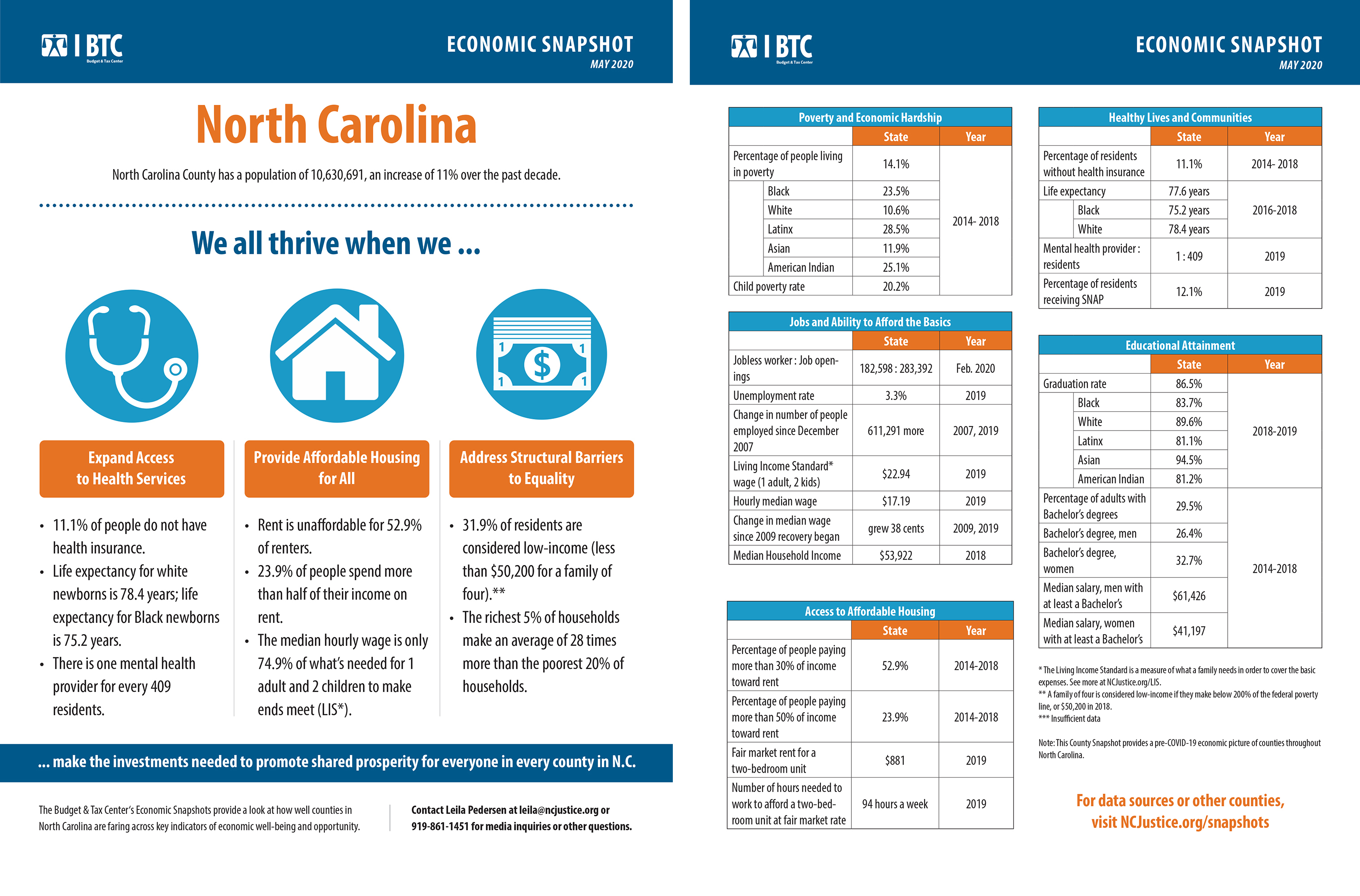The economic snapshots provide a quick-reference resource for journalists, local officials, and service providers in all 100 counties throughout the state.
RALEIGH (May 12, 2020) — The pre-COVID-19 economic picture of counties throughout North Carolina is clearer today with the release of county-by-county data from the Budget & Tax Center in an easy-to-use format. Data is available for all 100 counties in North Carolina.
The Economic Snapshot is an annual publication that lists key economic and social indicators at the county level in North Carolina, providing an overall picture of how well-being varies through the state. This data profile includes indicators on employment, poverty and income, affordable housing, health, education, and supports for working families — all of which come from a variety of credible sources.
Key findings for all 100 counties include:
- The richest 5 percent of North Carolina households have an average income that is 28 times greater than the poorest 20 percent of households.
- Rent is unaffordable for 53 percent of North Carolina renters who put more than 30 percent of income toward their rent, and even more so for 24 percent of North Carolinians who spend more than 50 percent of their income on rent.
- 20 percent of children in North Carolina lived in poverty in 2018, the most recent data available. Children, women, and people of color are more likely to live in poverty than the average North Carolinian.
“Before COVID-19, not all of North Carolina’s communities benefited equally from recent economic growth,” said Leila Pedersen, Policy Analyst with the NC Budget & Tax Center. “Disparities across counties are likely to be even starker in the wake of the COVID-19 outbreak.”
Not surprisingly, poverty rates are generally higher in counties where the population is declining. In counties where the population is growing, educational attainment and wages are significantly greater. Over the past decade, wages have fallen in 44 counties, after adjusting for inflation. Employment, wages, and many other economic indicators have already fallen and are expected to continue to decline well below the pre-pandemic baseline provided by this snapshot.
Check out the 2020 Economic County Snapshots here.
FOR MORE INFORMATION, CONTACT Leila Pedersen, a Policy Analyst with the Budget & Tax Center, at 919-861-1451 or leila@ncjustice.org; or Mel Umbarger, Senior Communication Specialist, at mel@ncjustice.org.
The Budget & Tax Center conducts non-partisan analysis of state budget and tax policy and monitors economic conditions in the state. We produce timely and accessible research that contributes to policy discussions and public debate, with the goal of building a broader understanding of the role of policy in supporting economic opportunity for all.
 Justice Circle
Justice Circle 